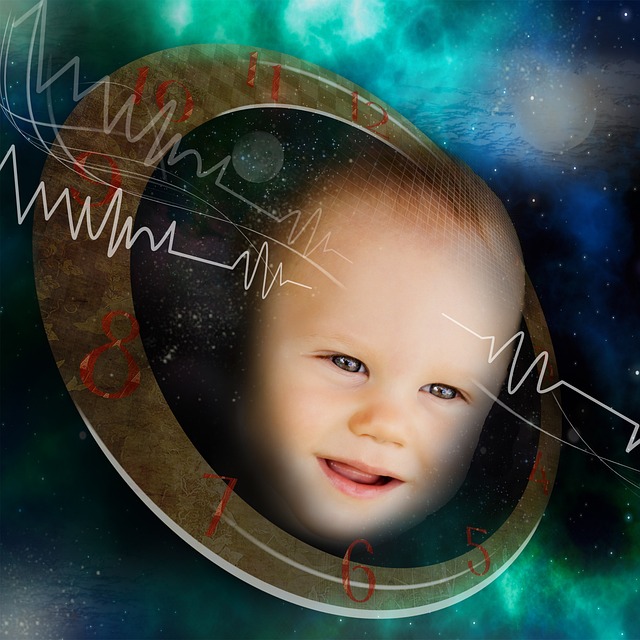Biorhythms are controllable, while circadian rhythms are not. Biorhythms are rhythms that occur naturally in the body and affect various physical, emotional, and mental processes. Circadian rhythms are based on environmental cues like sunlight and temperature changes.
What are biorhythms?
(Image by Brigitte Werner from Pixabay )

There are three main types of biorhythms:
physical biorhythms, emotional biorhythms, and mental biorhythms.
Physical biorhythms regulate things like energy levels, metabolism, and hormones.
Emotional biorhythms affect moods, stress levels, and emotions.
Mental biorhythms influence cognitive functions like memory, concentration, and creativity.
Biorhythms, are the fluctuations in our physical, mental, and emotional well-being that occur over a 28-day period. These cycles are influenced by our hormones and can be affected by things like stress, travel, and illness.
Biorhythms generally dictate when we feel sleepy or awake, regardless of external factors. If we’re not getting enough sleep during our biorhythmic “sleepy” periods, we may find ourselves feeling tired during the day.
What are circadian rhythms?
(Photo by Acharaporn Kamornboonyarush )

Circadian rhythms are the daily fluctuations in our bodies that tell us when to wake up, when to go to sleep, and when to eat. They’re controlled by an internal clock, and they follow a 24-hour cycle. Circadian rhythms are patterns of physiological changes that follow regular cycles lasting anywhere from a few hours to several months. Many different factors can influence our Circadian rhythms, including weather, temperature, barometric pressure, humidity, altitude, time zone changes, and even the season of the year.
Our bodies adapt to these cues and adjust our daily patterns accordingly.
Circadian rhythms can also be influenced by factors like light exposure and stress levels. If we’re not getting enough sleep during our circadian “sleepy” periods, we may find ourselves feeling more tired in the evening or night.
Biorhythms Vs. Circadian rhythms – Key differences
Biorhythms and circadian rhythms are both biological processes that regulate the functioning of the human body, but they differ in several ways.
Biorhythms are physical, emotional, and intellectual cycles that are believed to affect a person’s behavior and performance. According to the theory of biorhythms, each person has three cycles that begin at birth and continue throughout their life. These cycles are:
- Physical cycle: This cycle lasts for 23 days and is believed to affect a person’s physical strength and coordination.
- Emotional cycle: This cycle lasts for 28 days and is believed to affect a person’s mood, emotions, and sensitivity.
- Intellectual cycle: This cycle lasts for 33 days and is believed to affect a person’s mental abilities, including memory, creativity, and problem-solving skills.
In contrast, circadian rhythms are biological processes that regulate the body’s sleep-wake cycle, metabolism, and other physiological functions. Circadian rhythms are controlled by an internal biological clock located in the brain, which is influenced by external cues such as light and temperature. The typical circadian rhythm is a 24-hour cycle that affects the timing of sleep and wakefulness, as well as other bodily functions such as hormone release, digestion, and body temperature.
The key differences between biorhythms and circadian rhythms are:
- Scope: Biorhythms are believed to affect a person’s physical, emotional, and intellectual functioning, while circadian rhythms primarily regulate the sleep-wake cycle and other physiological processes.
- Cycle duration: Biorhythms have fixed cycle durations of 23, 28, and 33 days, while circadian rhythms have a fixed duration of approximately 24 hours.
- Scientific basis: Biorhythms are not well-supported by scientific evidence and are considered a pseudoscientific concept, while circadian rhythms have a strong scientific basis and are widely accepted in the scientific community.
While both biorhythms and circadian rhythms are biological processes that affect the human body, they differ in scope, cycle duration, and scientific basis.
What is the difference between circadian clock and circadian rhythm?
The circadian clock and the circadian rhythm are related but distinct concepts.
The circadian clock is the internal mechanism that regulates the body’s circadian rhythms. It is a biological clock that operates at the molecular level, controlling the timing of physiological processes such as sleep-wake cycles, hormone release, and body temperature. The circadian clock is located in the suprachiasmatic nucleus (SCN) of the brain, which receives input from light-sensitive cells in the eyes and synchronizes the body’s internal clock with external environmental cues.
In contrast, the circadian rhythm is the physical, mental, and behavioral changes that follow a roughly 24-hour cycle in response to the circadian clock. This includes the sleep-wake cycle, changes in hormone levels, and fluctuations in body temperature and metabolism. The circadian rhythm is influenced by the circadian clock but is also affected by external factors such as light exposure, exercise, and diet.
The circadian clock is the internal mechanism that regulates the body’s circadian rhythms, while the circadian rhythm refers to the physical, mental, and behavioral changes that occur in response to the circadian clock.
What is the difference between circadian and infradian rhythms?
Circadian and infradian rhythms are both biological processes that regulate the functioning of the human body, but they differ in their duration and frequency.
Circadian rhythms are biological processes that follow a roughly 24-hour cycle. These rhythms are regulated by the body’s internal biological clock, which is located in the suprachiasmatic nucleus (SCN) of the brain. Circadian rhythms affect a wide range of physiological processes, including the sleep-wake cycle, hormone release, and body temperature. Examples of circadian rhythms include the daily fluctuations in alertness, hunger, and mood.
Infradian rhythms, on the other hand, are biological processes that have a longer duration than 24 hours. Infradian rhythms occur less frequently than circadian rhythms and are typically associated with reproductive cycles or seasonal changes. Examples of infradian rhythms include the menstrual cycle in women, the hibernation cycle of bears, and the migration patterns of birds.
The key differences between circadian and infradian rhythms are:
Duration: Circadian rhythms have a duration of approximately 24 hours, while infradian rhythms have a longer duration.
Frequency: Circadian rhythms occur on a daily basis, while infradian rhythms occur less frequently.
Regulation: Circadian rhythms are regulated by the body’s internal biological clock, while infradian rhythms are regulated by other biological mechanisms, such as hormonal changes.
While both circadian and infradian rhythms are biological processes that affect the human body, they differ in their duration, frequency, and regulation.
Featured Image By – Kate Stone Matheson on Unsplash








